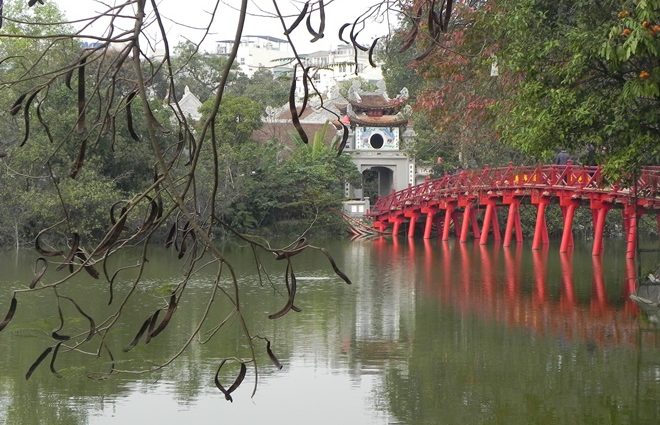Once again I am back in one of my favourite nests in the world – Hanoi – the captivating capital city of Vietnam teeming with history and where traditions and culture shake hands with modernity.
It’s a Sunday morning and a sense of leisure is rippling in the air. I am standing in a queue with helpful companion Hoang from my host Vietravel – the country’s leading tour operator to enter a large granite building – formally known as Ho Chi Minh Mausoleum where the body national hero rests in peace.
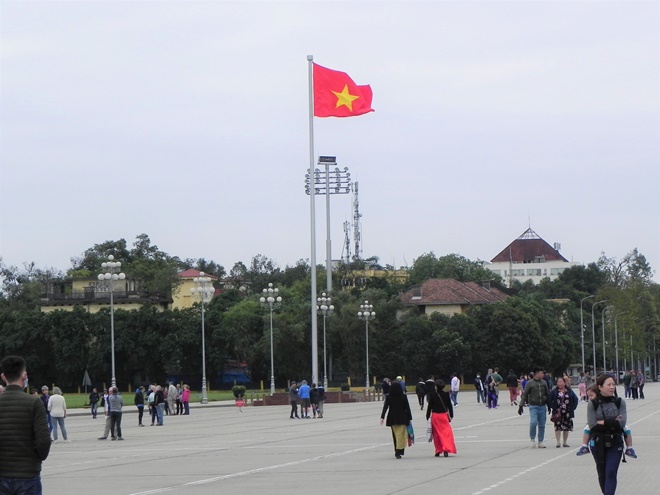
This eye-catching edifice dominates the Ba Dinh Square – a sprawling paved arena in status aptly matching the Red Square in Moscow or the Tiananmen Square in Beijing. It was from here in 1945, Ho Chi Minh declared independence from the French, though it formally came in 1954 after lots of bloodshed and struggle.
While waiting, my memory goes back down the lane to those sizzling days of the ‘70s in Kolkata when I was a university student. Inspired by the revolutionary movement of Ho Chi Minh, a section of city’s younger generation then became keen to establish a new society that’s just and equitable.

His Mongolian face with long moustache and goatee became very familiar to all Kolkatans, as the walls of almost every city building were covered in posters with his photo and slogans such as “Ho Chi Minh Lal Salam” printed in bold red colour.
I then never thought one day I will have the opportunity to see the memorable face with flesh and bones till I made my maiden visit to Hanoi in 2006. Since then every time I am back, I line up here to pay my respect to a person whose life reads like a thriller.
Revered affectionately as Bac or Uncle by the Vietnamese people, the legendary leader changed his name several times and lived in Europe and United States for over thirty years. While living in Paris, after the World War 1 his political consciousness, influenced by the Marxist philosophy, began developing. He was a founding member of the French Communist Party and travelled to Russia and China to learn more about communism.
In the 40s, he visited Kolkata also and stayed at the colonial Great Eastern Hotel. After returning Vietnam in 1945 he declared independence, but that was not enough – he had to then fight over eight years of guerrilla war to gain total independence from the French.
In 1954 he became the first president of North Vietnam and led the country. After his death in 1969, his mortal remains like fellow comrades – Lenin and Mao have been preserved with special chemicals, stored in a glass coffin and set deep inside this colossal edifice which over time has become the city’s top attraction, definitely for the first time visitors.
It is a place of great respect and ideological significance, hence high level of discipline is maintained when entering the building – no talking, laughing, hands in pockets, wearing of hats and photography to preserve a respectful demeanour at all times.
Inside it’s cold and the silence seems absolute – I hear nothing but our own breaths. We keep moving, till we enter the room where the casket is kept. Four uniformed sentries with bayonet rifle in hand and expressionless face stand like a statue in each corner of the glasshouse.
We move from one side, past the feet along the other side of the casket. Spotlights focus on his face. Attired in white clothes, he lies peacefully with his thin hands cast on his chest. A girl in front of me, momentarily breaking the decorum whispers – “Is it real?” The question echoes in mind as well. I pause for a moment, my mind swirl to Madame Tussaud and think it can be a good wax copy, but the sanctimonious atmosphere tells me it isn’t.
Not far from his resting place is the modest house on stilts where he lived as the nation’s president. Visitors drop in here and peep through the windows to glimpse some of his belongings that reflect a lifestyle full of simplicity. This house is next door to the former French President’s Palace – a mustard yellow coloured Beaux style regal building where simple-minded Ho Chi Minh refused to stay.
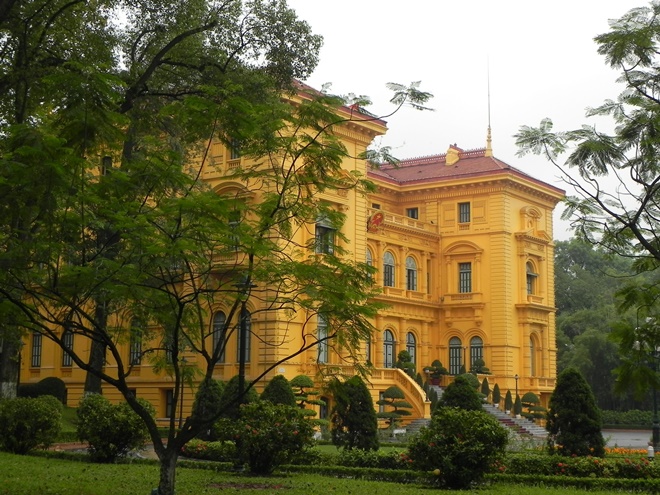
The French lived in this city for 70 years since late 19th century and painted the landscape like their Paris with grandiose yellow buildings flanking tree lined boulevards and avenues. Most of them still exist but now carries a Red Flag reflecting the nation’s communist background.
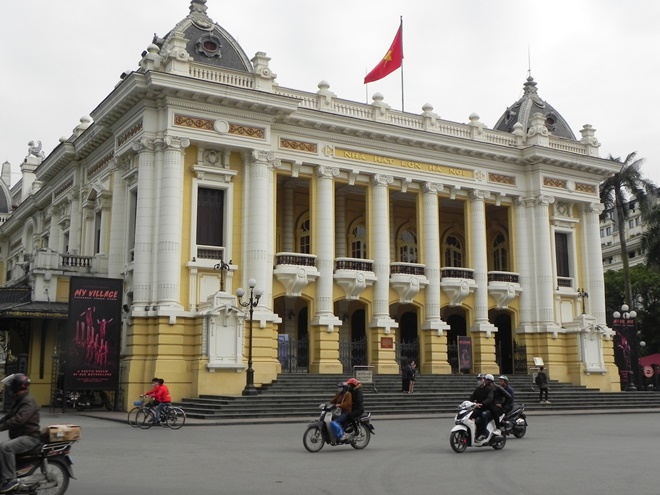
Out of several, vastly lens captured are the former Presidential Palace, Opera House and the St Joseph Cathedral. Going through the French legacies that go beyond architecture into the city’s café culture and liking for croissants, baguettes and crevettes ail (garlic prawn), is also a key lure of Hanoi, earlier called Thang Long during the glorious royal era.
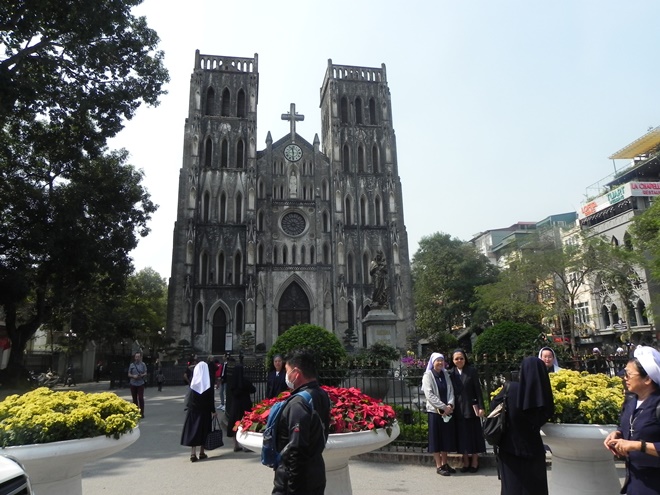

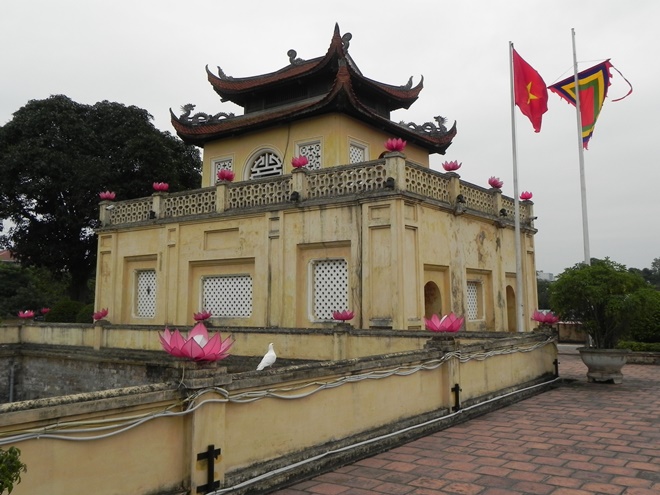
Centuries of traditional Vietnamese architecture and cultural attributes can be experienced when visiting the 1000 years old Temple of Architecture, Thang Long Imperial Citadel and the adjacent Flag Tower, Tran Quoc Pagoda on the West Lake and Ngo Son Temple on the Hoan Kiem Lake.
Hanoi is also known as the “City of Lakes”, as quite a few embellish the landscape by their beauty and shoreline sceneries. Undoubtedly the most revered is the Hoan Kiem Lake where the city’s heart bangs for almost 24 hours. It’s located within close proximity of Hanoi’s famous Old Quarter full of life, colour and vivacity.
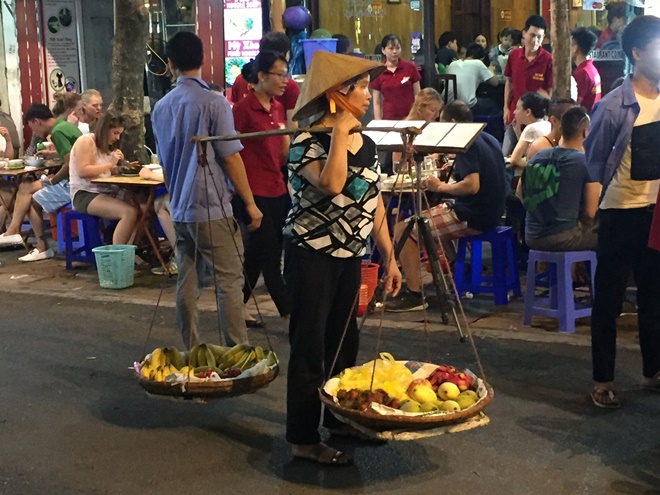
This domain was established in the 15th century with 36 lanes each specialising in one of 36 trading guilds. Now things have changed, but the streets are still lined with shops of different kinds, making the area a nest of fusion between past and present. Best way to browse this area is by taking a ride on a Cyclo – a three-wheeled rickshaw pedalled by the driver from the behind. This mode of transport is a symbol of Vietnam.
Many ask why I fancy Hanoi so much. Besides being a lively and friendly city like my birthplace Kolkata, what appeals to me immensely is the city’s unending appetite to fusion. I love seeing here women wearing jeans as well as traditional ‘áo dài’, which is a tight-fitting silk tunic worn over pantaloons, McDonald’s sharing business with local “Pho” or noodle soup eateries, glittering shopping malls not concerned with the existence of countless shops in the old quarter, French-built buildings with green coloured wooden windows not feeling jealous of the newer office blocks, Coca Cola and sugarcane juice selling at same speed and senior citizens while leisurely playing a game of badminton at a park enjoying the loud rock music blazed by youngsters doing aerobic workouts.
Surely this city of almost 7.8 million brims with a complex history, yet full of modern energy and potential. Being one of South East Asia’s most progressing capital city, its contemporary features message me triumph over adversity. Modern yet old-fashioned, communist yet capitalist, cosmopolitan yet quaint are some expressions that I may use to describe my way of seeing 21st century Hanoi.
TRAVEL NOTEBOOK
Getting There – IndiGo (www.goindigo.in) and VietJet offer non-stop flights between India and Vietnam; IndiGo operates from Kolkata to Hanoi, while VietJet fly from Mumbai and New Delhi to Hanoi
Stay – No shortage of hotels to suit budget, Thang Long Opera Hotel offers comfort and luxury at a reasonable price and is located close to all the attractions
Tour Operator – Contact Vietravel – one of Vietnam’s biggest and most trusted tour operator. They offer multiple Vietnam itineraries to suit the budget, taste and requirement of every traveller.
Indian Restaurant – The city has a few of them, Namaste Hanoi in the city-centre is popular with curry loving locals and visitors from India and other countries
Visa – Check
Also read | Kaziranga National Park: Land of the Rhinos
Also read | Check out these stunning, lesser-known Thailand locations

